Iguazu Falls is known as the largest waterfall system in the world with more than 275 individual cascades spread over a vast 1.7 miles and two countries. The falls act as the international border between Argentina and Brazil, with a national park located in each country. The name “Iguazu,” meaning “big water” lives up to the hype at this major global tourist site.
UNESCO first made the falls a World Heritage Site in 1984 and later chose the falls as one of the New Seven Natural Wonders of the World in 2011. The powerful waters overtake the senses at this bucket list-worthy destination.
Arrival
Getting to Puerto Iguazu (IGR) in Argentina from Buenos Aires is roughly a two-hour flight. Upon arrival, taxis are available for the 15-minute drive to the entrance of Iguazu National Park.
Park entrance fees may be paid in cash or by credit/debit card; however, carrying ample cash on-hand is an important consideration and potential time-saving tip. The line to pay for park admission is divided by payment method, and the lines for cash transactions tend to be much shorter than those wishing to pay via card.
Preparations
The temperature can approach 100°F with high humidity. Sunscreen and bug repellant are essential, and both can typically be found at the multiple concessions located throughout the trail network. The concessions also offer refreshments and restrooms. A larger, air-conditioned restaurant is located near the park entrance.
Yellow Fever is present in the area and while not required, The Center for Disease Control recommends that those visiting Iguazu Falls are vaccinated, even if only visiting for a one- or two-day trip. At present, neither Brazil nor Argentina requires travelers to provide proof of vaccination against yellow fever.
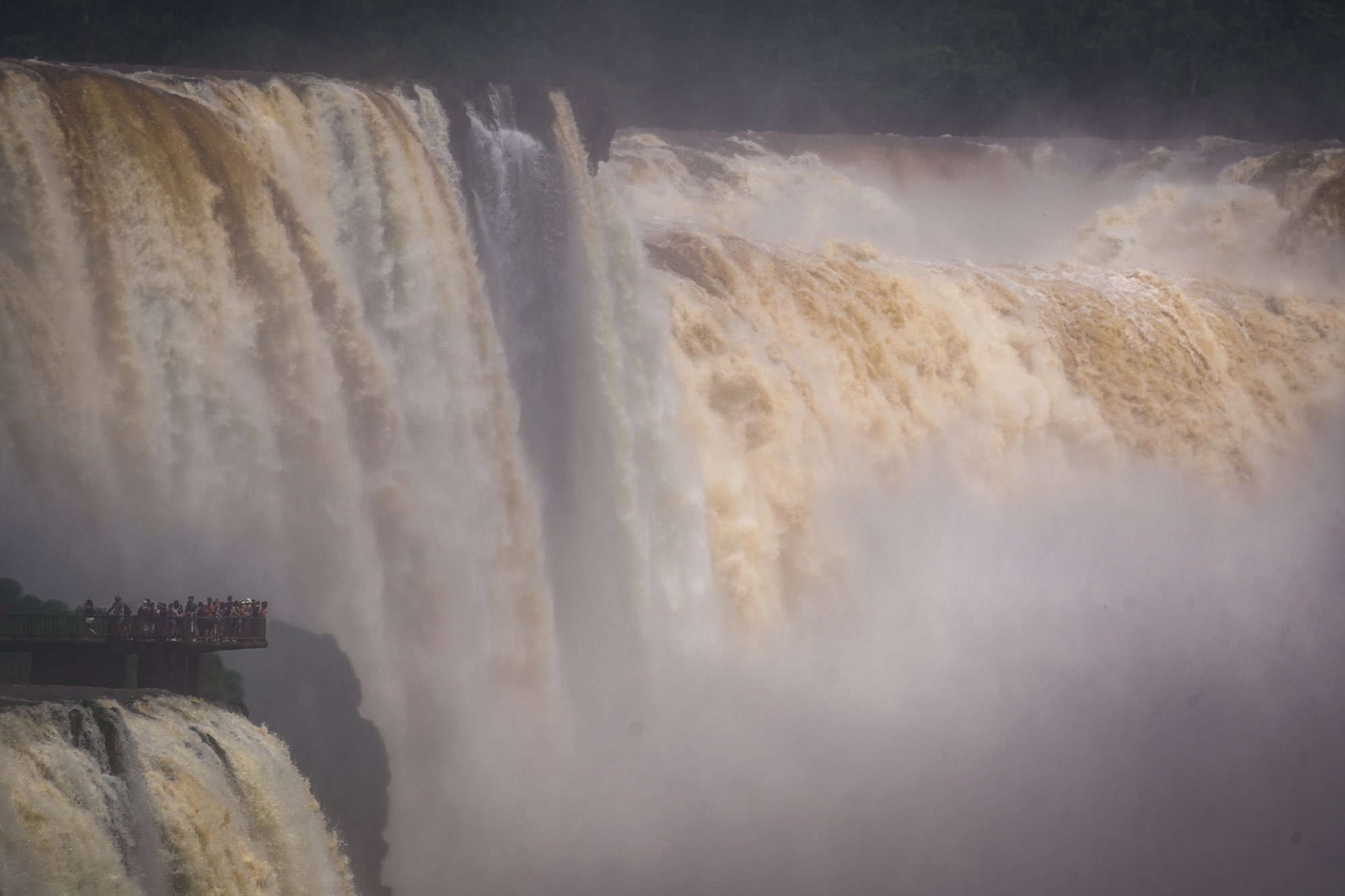
Ways To Explore the Falls
For an exhilarating adventure at the falls, hop on a thrilling boat tour that promises to leave you both soaked and invigorated. After a brief jungle ride in an open-air bus, the journey takes you upstream for a view of the Brazilian falls, culminating in a refreshing drenching beneath the pounding Argentine waters. The tour offers an unforgettable perspective that will leave you buzzing with excitement. Reservations are recommended, although same-day bookings may be possible upon park entry for approximately $40 USD equivalent. Dry lockers are also available for an additional fee. Remember to pack a change of clothes to fully enjoy the remainder of your visit after getting completely soaked.
The most popular hike in the Argentina park is known as Devil’s Throat and takes you 1.36 miles roundtrip. The heavily used trail will take a minimum of sixty minutes, but most visitors find that with the numerous overlooks and photo opportunities it typically takes up to two hours. The Devils Throat Bridge, which had been closed after devastating rains and subsequent flooding in October 2023, reopened on July 13, 2024.
Visitors with limited mobility or children in strollers should note that the park is largely accessible. Both the Devil’s Throat and Upper Trail systems being completely accessible with wide walkways and gentle slopes. However, the Lower Trail is considered physically demanding, featuring multiple stairways and potentially slippery conditions due to the wet walkways from the mist and frequent rains.
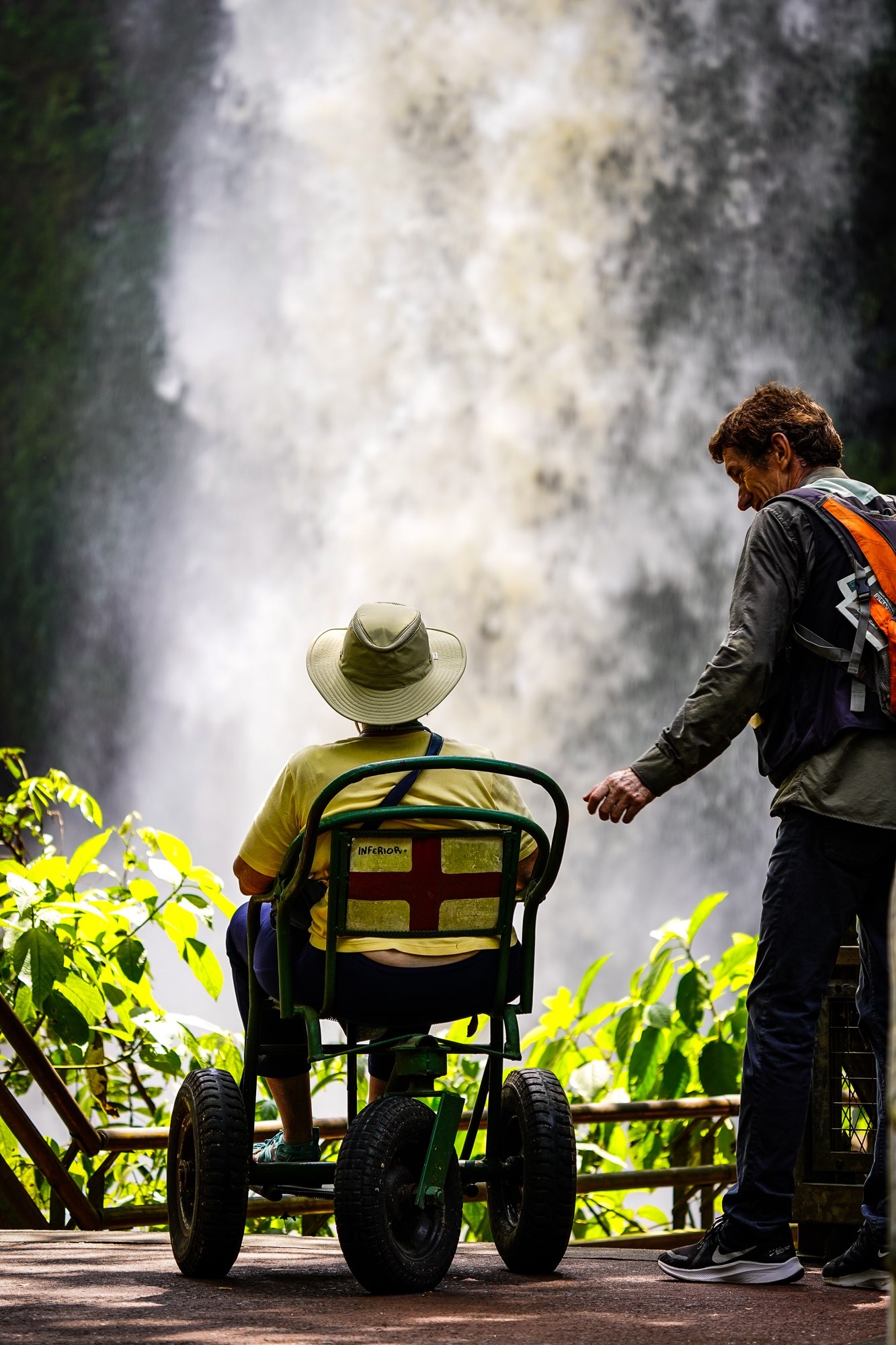
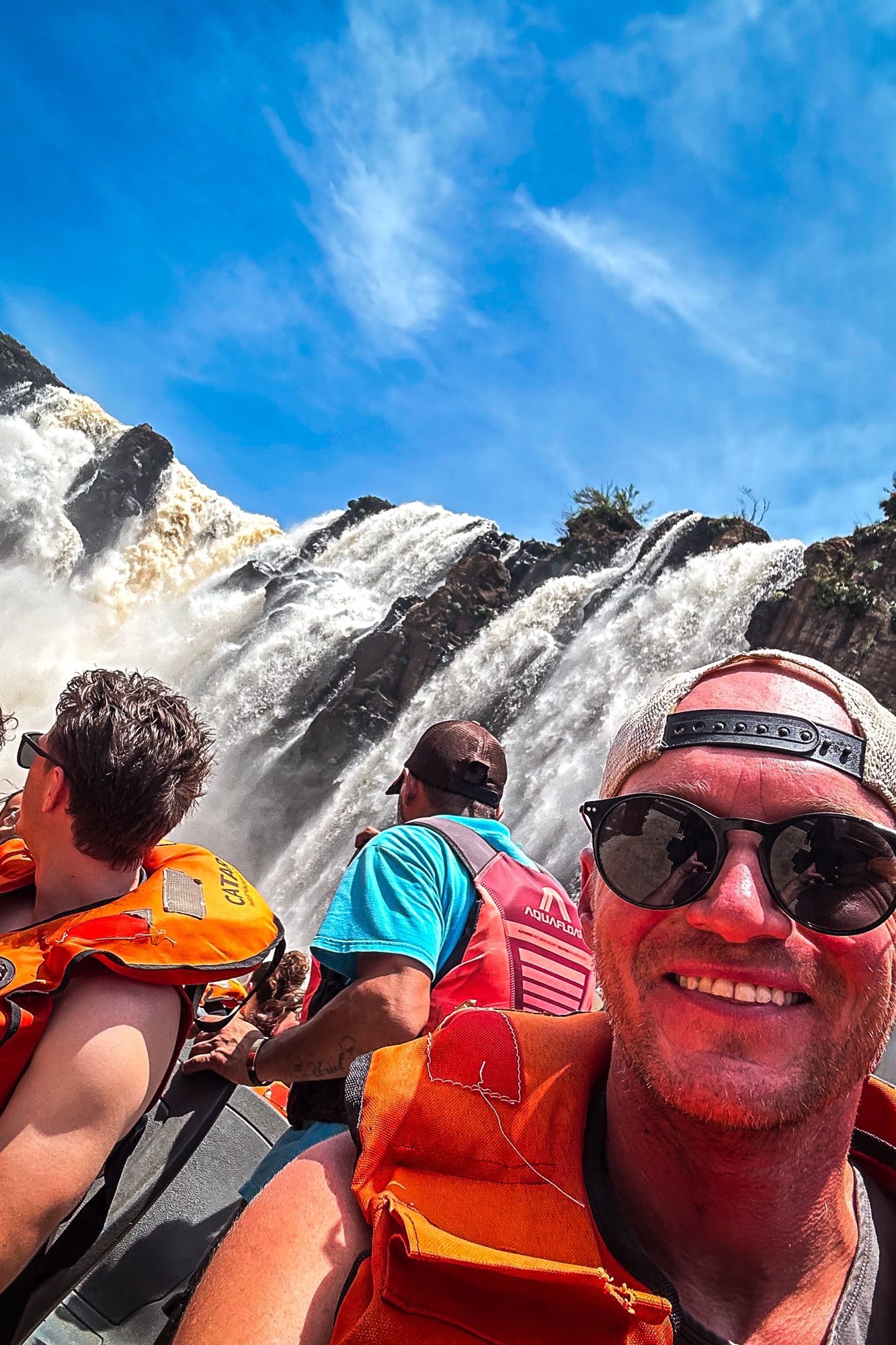
Border Crossing
It is possible to visit both the Argentina and Brazil national parks in a single day with careful planning, patience and an early arrival. The Brazilian side, known for its panoramic views and Instagram-worthy photos, and the Argentinian side, known for its extensive trail network and up-close look at the falls from both above and below are however, best visited on a multiple day trip.
There is no footpath or sidewalk to cross the border; you must take transportation such as taxi, rental car or bus. A valid passport is required, and while many nationalities do not need visas arranged in advance for a visit, beginning April 10th, 2025, Brazil will require a visa for American tourists (verify current requirements at https://travel.state.gov).
The border crossing can be time-consuming, so if a multiple day visit is not in the cards, it is important to consider your physical ability and preferences when choosing which side to visit. Alternative international airports are located Foz do Iguazu (IGU) in Brazil or Ciudad del Este (AGT) in nearby Paraguay.
Immersive Experience
For the most immersive experience, consider staying in one of the two hotels located within the national parks: Grand Melia Iguazu offers both jungle and falls view rooms in Argentina. The Grand Melia is preferable for exploring the national park on foot. Belmond Das Cataratas Hotel, located within the Brazilian National Park may be a better option if you prefer activities such as helicopter rides or whitewater rafting.
Iguazu Falls offers something for everyone. Fauna and flora combine in a stunning display of nature’s beauty at this UNSECO World Heritage Site. Whether you visit for a day or soak it all in over a multiple day trip to multiple countries, Iguazu Falls are a must for anyone that loves chasing waterfalls.


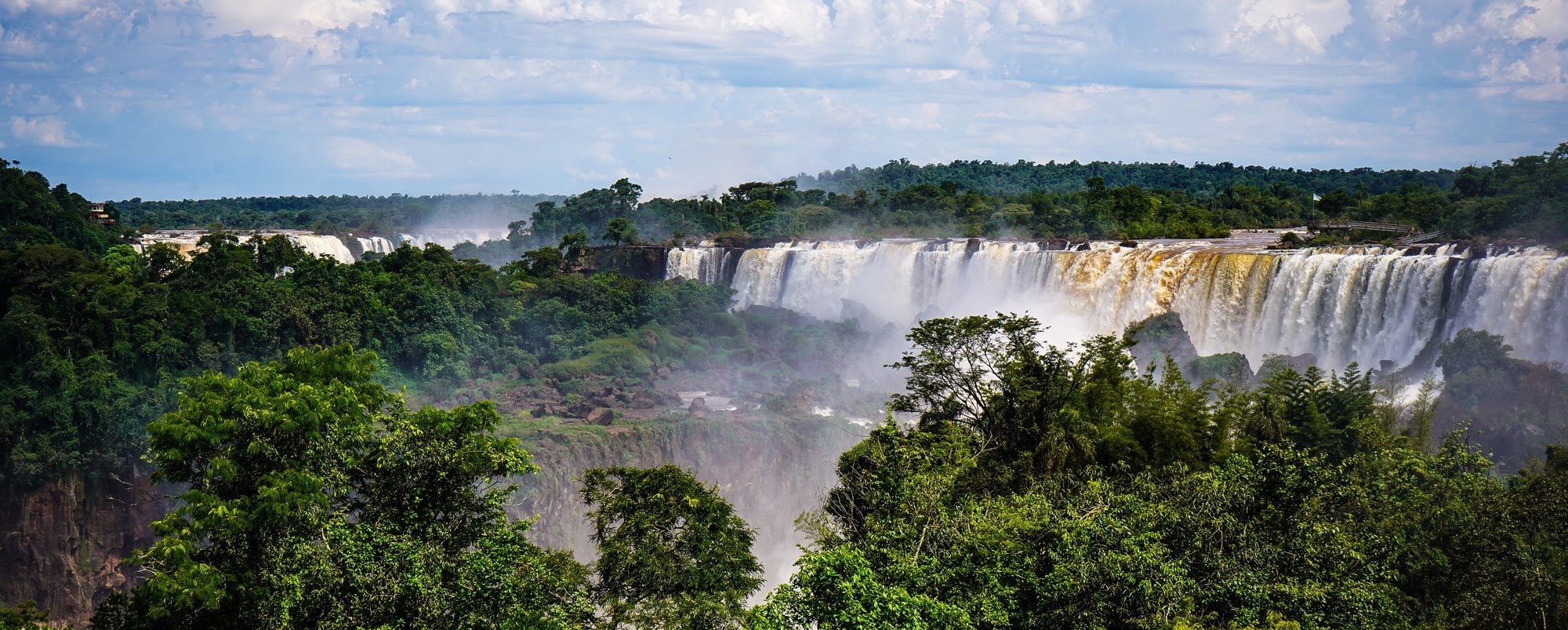

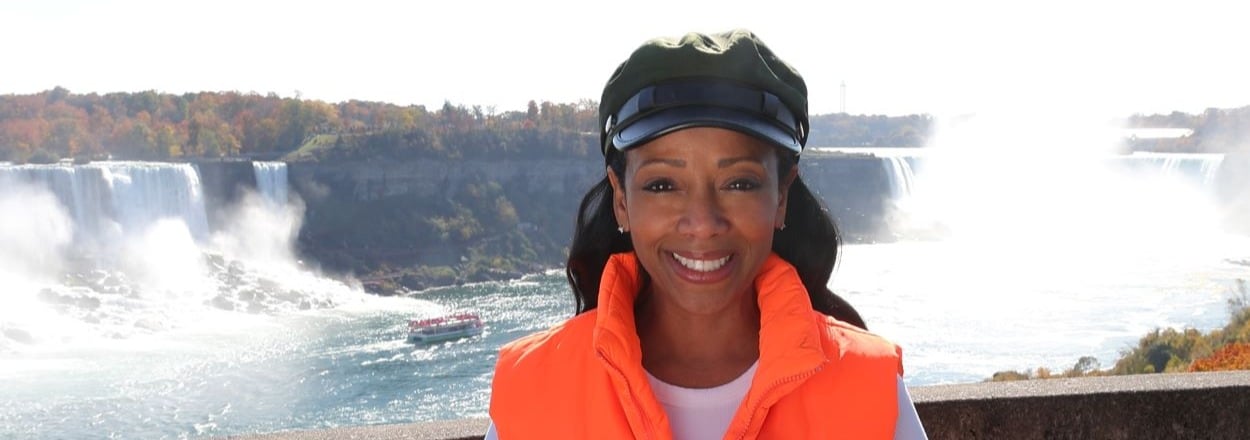
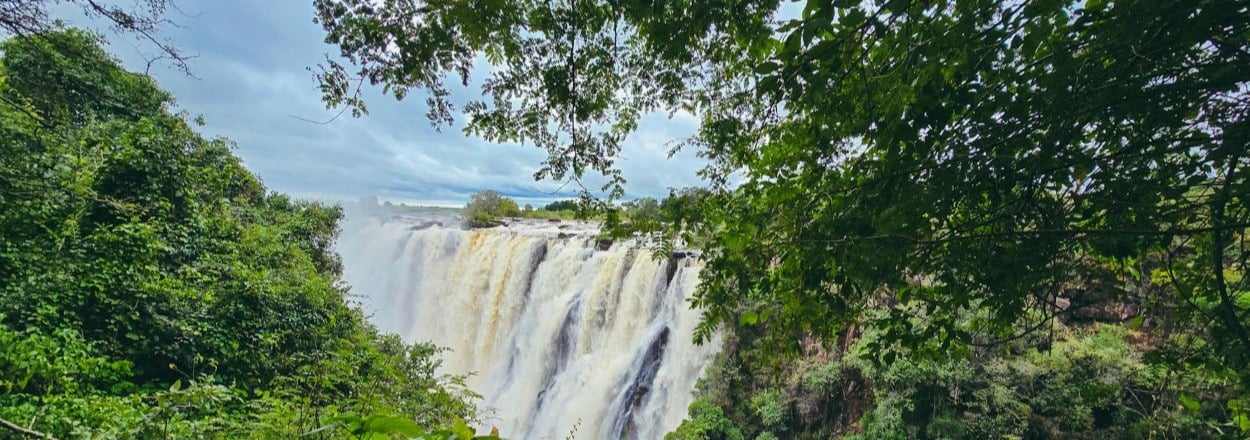
comments